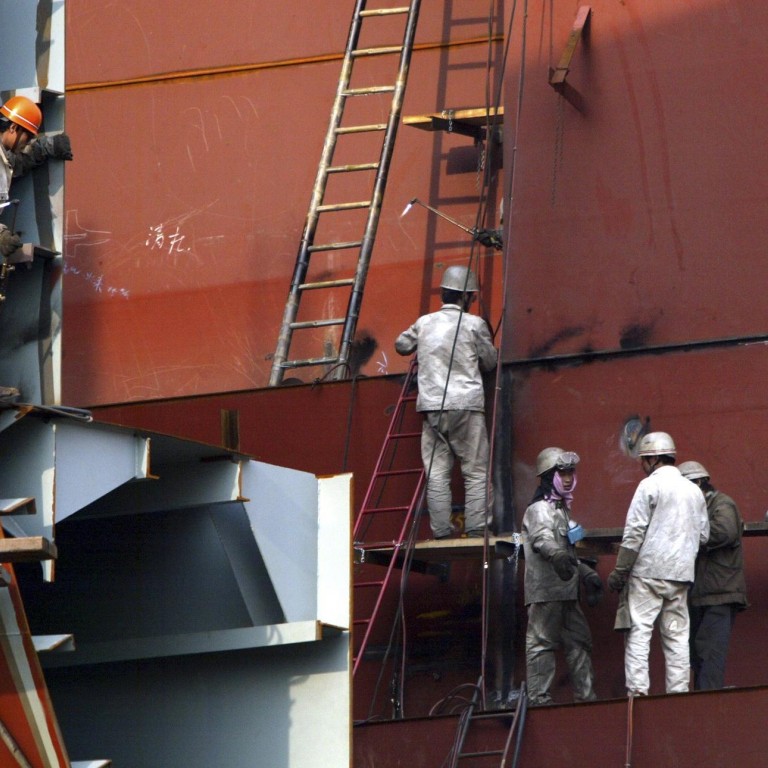
Chinese yards to get US$10b in LNG tanker orders
Push aims at reviving ailing industry and boosting domestic fleet delivering gas supplies
Chinese shipyards are aiming to take US$10 billion in orders for gas tankers over the rest of the decade, part of a plan to restructure the country's ailing shipbuilding sector and secure China's energy supply chain.
The push to build its own natural gas delivery vessels will boost China's capability in high-technology ships and pose a challenge to South Korean and Japanese shipyards that have been the main suppliers of large gas tankers for 30 years.
Up to 50 liquefied natural gas tankers, or more than 20 per cent of the 225 LNG vessels expected to be added worldwide by the end of 2020, are set to be built in China to deliver gas to its ports, according to estimates from ship safety agency American Bureau of Shipping.
Relying on home-built vessels for gas deliveries - which China needs to serve new import terminals - gives it greater control over its supply chain and snags a bigger share of the high-value end of the shipbuilding business.
"Regardless of the availability in the market for LNG carriers, China will ship the bulk of its cargoes through its own project dedicated vessels," said Andrew Bridson, a business development manager at transport and energy consultant BMT Asia-Pacific.
The global shipping industry is emerging from a five-year downturn, the worst in 30 years, and China - the largest shipbuilding nation and long the leader in basic vessels - sees a growth opportunity in developing the skills and technology to build more sophisticated ships.
Beijing last year laid out a plan for domestic shipyards to target a quarter of the global market for high-technology ships, including LNG tankers.
"In future, our output is going to outstrip that of Japan and Korea," said Yang Baohe, a principal naval architect at the Marine Design & Research Institute of China, a subsidiary of China State Shipbuilding Corp.
More than 70 per cent of about 125 LNG carriers and storage vessels on order have gone to Korean shipyards such as Daewoo Shipbuilding and Marine Engineering and Samsung Heavy Industries.
But those orders represent only a little more than half of the total investment of nearly US$50 billion needed to expand the global LNG fleet of 394 vessels, based on an average gas tanker cost of US$200 million and ABS estimates.
As more LNG plants start up in the United States, Australia and Russia to feed Asia's voracious gas demand, an additional 100 ships are expected to be ordered for delivery over 2017-2020, according to shipping analysts and consultants.
China plans to more than double its gas supply by 2020, and is looking to triple its LNG imports to about 60 million tonnes, or about 82 billion cubic metres.
China would need to put US$9 billion to US$10 billion into expanding its fleet, said Bill Sember, a vice-president of global gas development at ABS.

